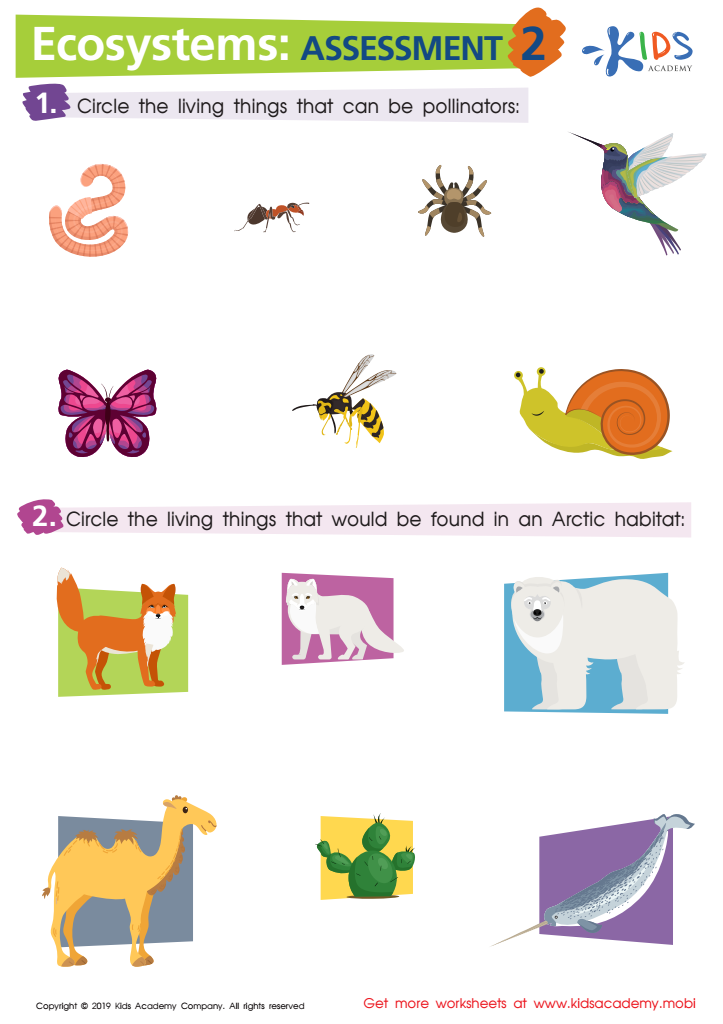Plants and Animals worksheets activities for 8-Year-Olds
1 filtered results
-
From - To


Ecosystems: Assessment 2 Worksheet
Plants and Animals worksheets activities serve as a fundamental resource in the educational journey of young learners, offering a blend of interactive and informative experiences that cater to various learning styles. These worksheets are not just pieces of paper; they are gateways to understanding the intricate world of biology, specifically the diversity and interdependence of plants and animals.
Firstly, Plants and Animals worksheets activities are instrumental in nurturing curiosity among students. They transform abstract concepts into tangible tasks, making the complex world of ecosystems, photosynthesis, animal habitats, and life cycles accessible and engaging. By actively participating in these activities, students develop a genuine interest in the natural world, fostering a lifelong passion for science and conservation.
Moreover, these worksheets are designed to cater to different levels of learners, ensuring inclusivity in the classroom. Whether it's through labeling diagrams, matching exercises, crossword puzzles, or creative drawing tasks, each student finds a mode of learning that resonates with them. This variety not only keeps students engaged but also reinforces their understanding through repetition in different forms.
Critical thinking and problem-solving skills are also honed through Plants and Animals worksheets activities. Students are often presented with scenarios that require them to apply their knowledge in practical ways, such as designing an ideal habitat or identifying the relationships within a food chain. Such tasks challenge learners to think beyond memorization, encouraging deeper understanding and application of concepts.
Additionally, these worksheets provide an excellent opportunity for hands-on learning. Activities that involve observation, comparison, and experimentation with real-life plants and animals bridge the gap between theoretical knowledge and practical application. This experiential learning solidifies concepts, making them more memorable and meaningful.
In conclusion, Plants and Animals worksheets activities are invaluable tools in the educational development of students. They foster curiosity, cater to diverse learning needs, enhance critical thinking, and promote hands-on learning, all of which are essential for nurturing informed, thoughtful, and passionate learners.
 Assign to the classroom
Assign to the classroom












